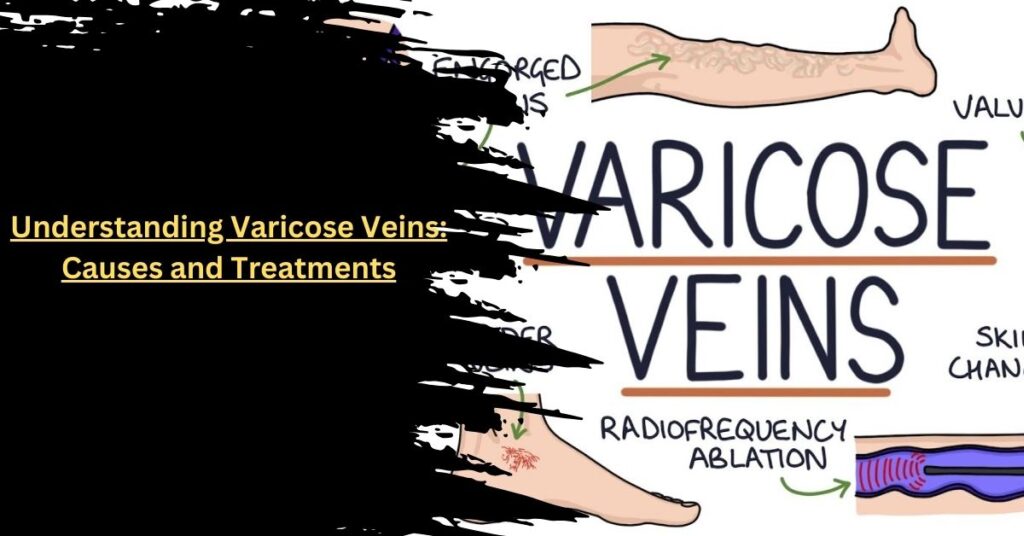Varicose veins are a common condition affecting millions of people worldwide. These swollen, twisted veins, often appearing on the legs, can lead to discomfort, pain, and aesthetic concerns. Understanding the causes and treatments of varicose veins is essential for managing this condition effectively.
Introduction to Varicose Veins
Varicose veins occur when the valves in the veins that regulate blood flow become weak or damaged, causing blood to pool and the veins to enlarge. While they can appear anywhere, they are most commonly found in the legs due to the pressure of standing and walking. Varicose veins are often blue or dark purple and may bulge out from the skin’s surface, causing both physical discomfort and cosmetic concerns.
Common Causes
Several factors can contribute to the development of varicose veins:
- Age: As we age, the veins lose elasticity, and the valves may become weak, leading to varicose veins.
- Genetics: A family history of varicose veins increases the likelihood of developing the condition.
- Pregnancy: Hormonal changes and increased blood volume during pregnancy can lead to enlarged veins.
- Obesity: Excess weight puts additional pressure on the veins.
- Prolonged Standing or Sitting: Occupations that require long periods of standing or sitting can hinder blood flow, contributing to varicose veins.
Symptoms
Varicose veins can present with a range of symptoms, including:
- Aching pain or heaviness in the legs
- Swelling
- Throbbing or cramping
- Itching around the veins
- Skin discoloration
- Visible bulging veins
Lifestyle Changes and Self-Care
Implementing certain lifestyle changes and self-care measures can help manage varicose veins and prevent them from worsening:
Exercise
Regular physical activity improves circulation and strengthens the muscles in the legs, helping to push blood back toward the heart. Activities like walking, swimming, and cycling are particularly beneficial.
Weight Management
Maintaining a healthy weight reduces pressure on the veins, preventing them from becoming enlarged and reducing the risk of new varicose veins forming.
Elevating Legs
Elevating your legs above heart level several times a day helps reduce swelling and improve blood flow.
Compression Stockings
Wearing compression stockings helps compress the veins, promoting better blood flow and reducing swelling and discomfort.
Medical Treatments
When lifestyle changes and self-care are not enough, several medical treatments are available to manage varicose veins effectively:
Sclerotherapy
Sclerotherapy involves injecting a solution into the varicose veins, causing them to collapse and gradually fade. This treatment is particularly effective for smaller varicose veins and spider veins.
Endovenous Laser Treatment (EVLT)
EVLT uses laser energy to heat and close off varicose veins. A laser fiber is inserted into the vein through a small incision, and the heat causes the vein to collapse and seal shut.
Radiofrequency Ablation (RFA)
RFA is similar to EVLT but uses radiofrequency energy to heat and close off the varicose veins. A catheter is inserted into the vein, and radiofrequency energy is delivered to the vein walls, causing them to collapse and seal.
Vein Stripping and Ligation
This surgical procedure involves tying off the affected veins and removing them through small incisions. It is usually reserved for more severe cases of varicose veins that do not respond to less invasive treatments, and it’s best performed by a vein specialist like those available in Tulsa.
Conclusion
Now that you have a better understanding of the causes and treatments for varicose veins, you can take steps to manage this common condition effectively. By making lifestyle changes, practicing self-care measures, and considering medical treatments when necessary, you can improve your symptoms and potentially prevent new varicose veins from forming.
